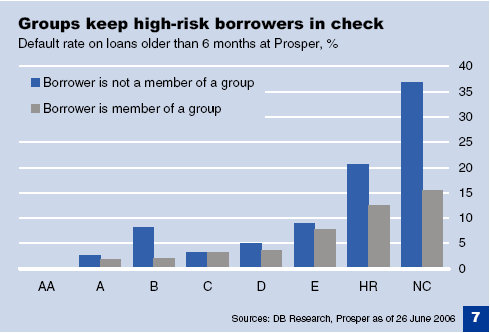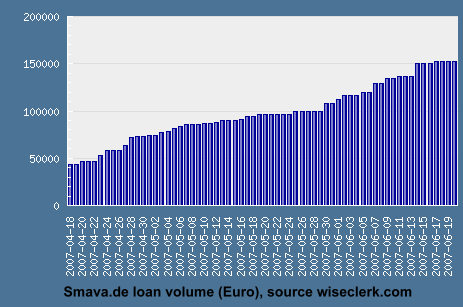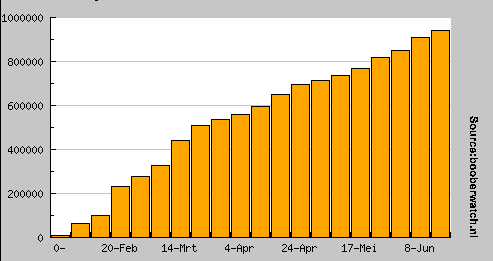Deutsche Bank research published a new 4 page report giving a good summary on the state of p2p lending. The report mentions Prosper, Zopa, Smava, Kiva and Boober. (Found through Marketingfacts.nl)

Deutsche Bank research published a new 4 page report giving a good summary on the state of p2p lending. The report mentions Prosper, Zopa, Smava, Kiva and Boober. (Found through Marketingfacts.nl)

Dutch p2p lending service Boober.nl changed the rules last week. Lenders are now restricted to a maximum investment sum of 39000 Euro. Boober told users that this step confirms that Boober is a platform for individuals and not for professionals or companies. It is believed that this step was neccessary due to regulation.
German Smava has restricted lenders to a maximum of 25000 Euros since the start. This too, is a precaution, since under German regulation professional lending without a license is not allowed.
Today I will take a look at the communication approaches of Prosper, Lendingclub, Zopa and Smava. Since it is hard to judge the individual customer support these companies offer, the focus of this post is on the mass communication channels. To communicate their services to the lenders and borrowers the services can use the website's FAQ/tutorials, a forum, blog(s) and newsletter(s).
Prosper.com
Prosper has very detailed FAQs, which leave no aspect open. There are tutorials, videos and webinars. The Prosper forums are very active. While Prosper announce changes to the service in detail (here), the policy usually seems not to comment on individual users questions (except for the bug report section). Prosper seems to rely on users to communicate and educate each other in the forums. There has been criticism about censorship and deleted posts in the forums which led some users to set up an prosper independent forum.
As far as I can tell Prosper has no blog of its own, but there is a personal blog of the CTO John Witchel. But it is not very active and will probably not be found by the average Prosper user.
Zopa
The Zopa FAQs are detailed, too. The Zopa Forum is quite active with Zopa staff members responding to posts and questions. Zopa has a company blog which has a leisurely tone and often is offtopic. In my opinion it could get more informative for lenders or borrowers.
The same applies to the newsletters Zopa sends out.
Smava
Smava maintains a very detailed and good FAQ. The Smava forum is pretty quite, but Smava staff usually is responsive to user questions. There is no blog. Smava is only 3 month old and so far there have been only 2 or 3 newsletters, which were mainly a summary of developments.
Lendingclub
Lendingclub communicates very different from the others. Mainly it relies on it's blog which is in fact directly on the Lendingclub.com homepage. The blog is very active with up to 2 or 3 posts per day. Not only does it explain details of the lendingclub service but also has general advice on personal finance, e.g. on obtaining and maintaining good credit. Lendingclub has lots of guest authors contributing to the blog. The FAQ are somewhat hidden and only available to logged in users (unless you know the direct link). The information, when located, is detailed (e.g. states). As far as I am aware there is no Lendingclub forum.
My impression is that Prosper and Smava communicate in a style that appears more corporate and 'old fashioned' always pondering what information can be released and what for. Prosper has occasionaly received rather aggresive feedback of users, citing them of being non-responsive to the wishes of their users. Zopa has a more buddying tone – hey take it easy. Lendingclub sounds educational to borrowers, aiming to help them by supplying them information. On the other hand Lendingclub's approach seems a little marketing driven, because their approach gains them search engine and blog visibility.
It's been roughly 3 month since the launch of German p2p lending service Smava.de and I want to do a short résumé on the results so far. One huge achievement is that all borrowers made their first payment on time – no lates so far. While it certainly is to early for conclusions, since only one payment cycle (first repayment in the beginning of June) has taken place, the outlook for Smava concerning low default rates is very good. Looks like Smava will be much nearer to Zopa then to Prosper in this point.
Smava has a very restrictive approach for admitting borrowers and loan applications. Not only does Smava verify identity, credit score and income documentation – it goes one step further and calculates if the borrower's financial situation is well enough to allow repayment of the desired loan sum. Only after completions of all these checks is the borrower allowed to publish is loan listing.
As a result the majority of borrowers (about 70 to 80 percent of all applicants) are declined from using Smava. While this strict validation is good for quality it does slow the growth of Smava.
Since the launch Smava enjoyed large and positive press coverage (newspapers, magazines, TV, internet). Despite the good PR, Smava funded only about 50 loans with a loan volume of about 150000 Euro in the first 3 month. There are enough lenders – Smava lacks borrowers. The low volume contrasts sharply from the figures Boober.nl achieved in the Dutch market (see previous post)

The majority of loan listings that were published did get funded. Smava has two interesting functions that are unique and not used on other p2p lending services:
Smava has yet to find a good concept for groups. While there are groups their purpose is yet to be defined. Consequently the majority of borrowers did not bother to join a group.
I will continue post updates on the development of Smava here on P2P-Banking.com.
4 month after the launch, Dutch p2p lending service boober.nl is approaching a total volume of 1 million Euro funded loans (chart shows development of loan volume since launch).

In comparision, German p2p lending service Smava.de, launched only 8 weeks after Boober is growing much slower. Currently it reached approx. 150000 Euro loan volume. Look forward for a post on the development of Smava in the near future.
Boober plans to launch in Belgium as next country. While not started yet, the domain boober.be is already up, saying "beta".
German p2p lending service Smava succeded in raising another 4 million Euro VC from Earlybird after previous cash inflow from private investors was announced just weeks ago. (Source: P2P-Kredite.com blog)